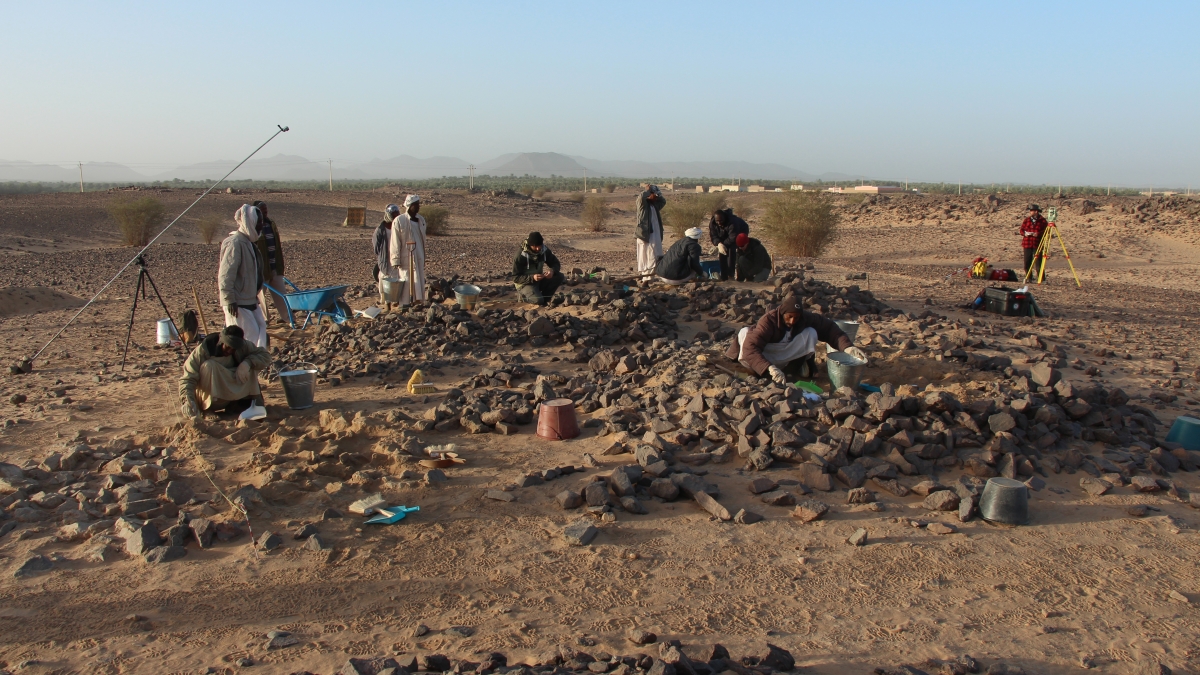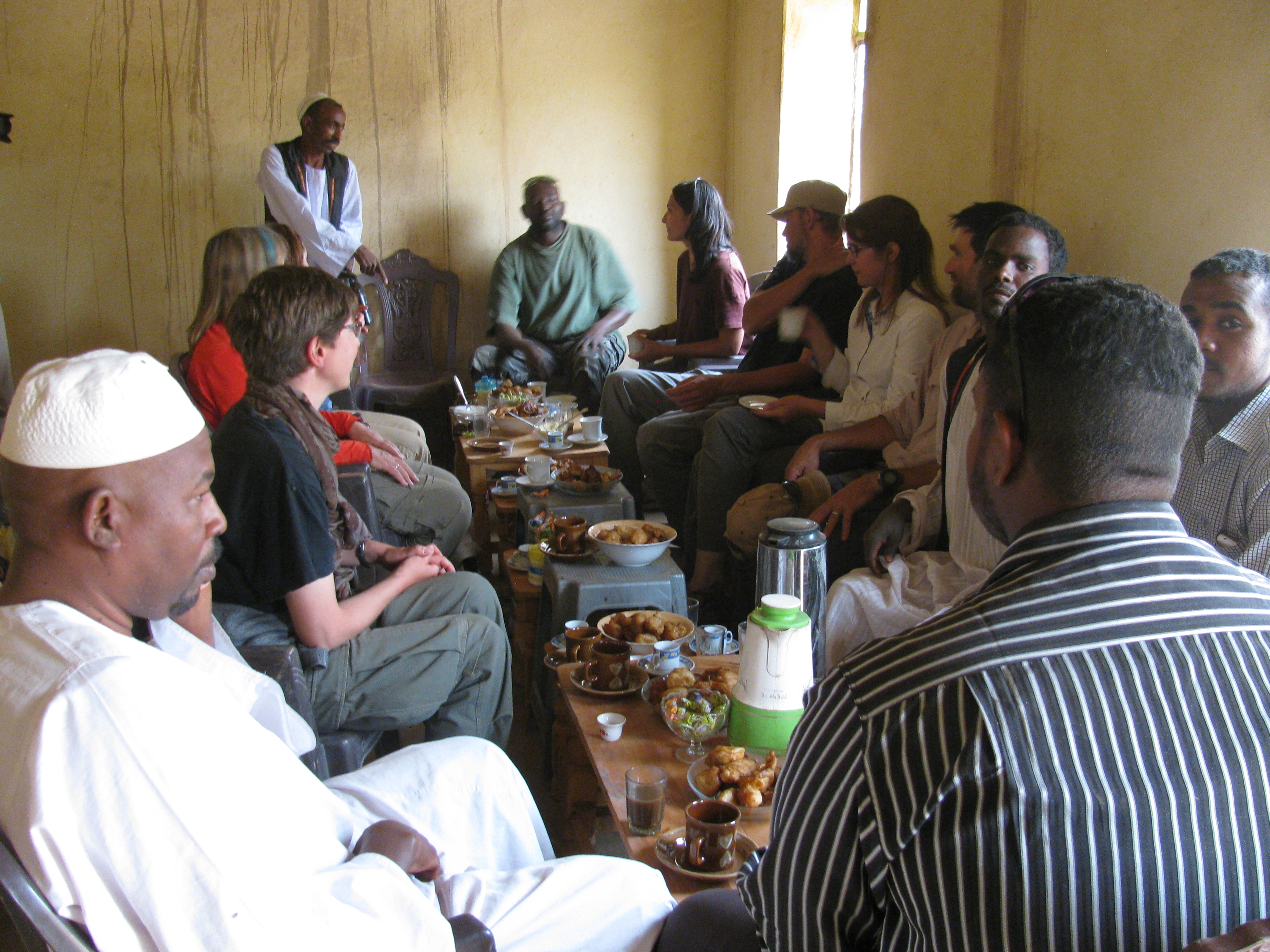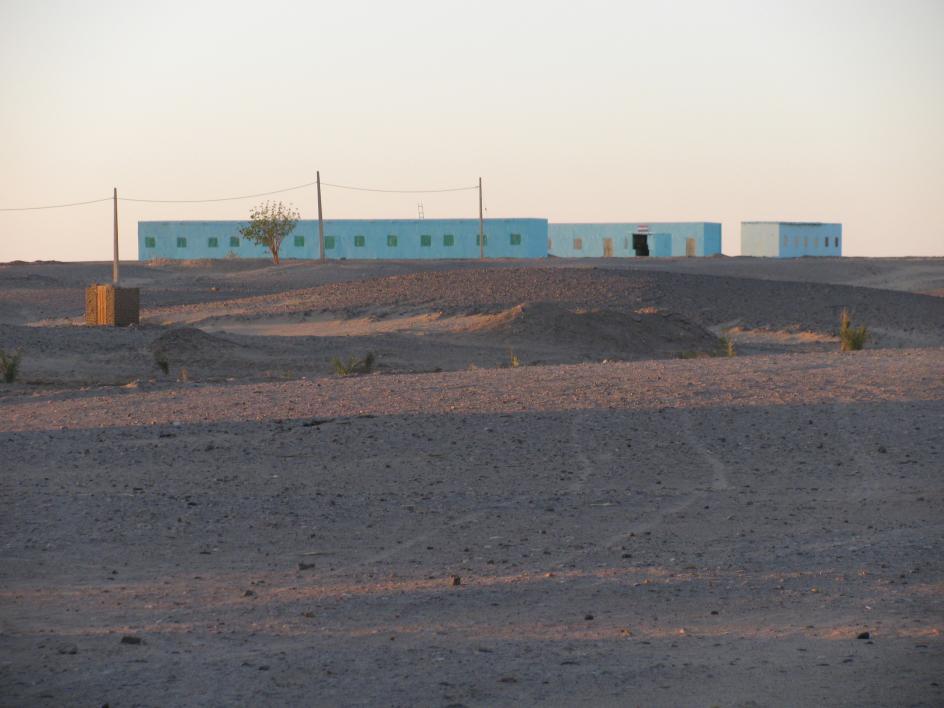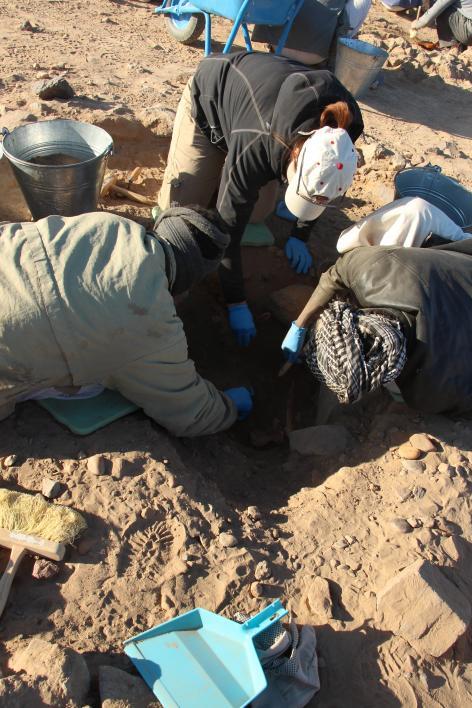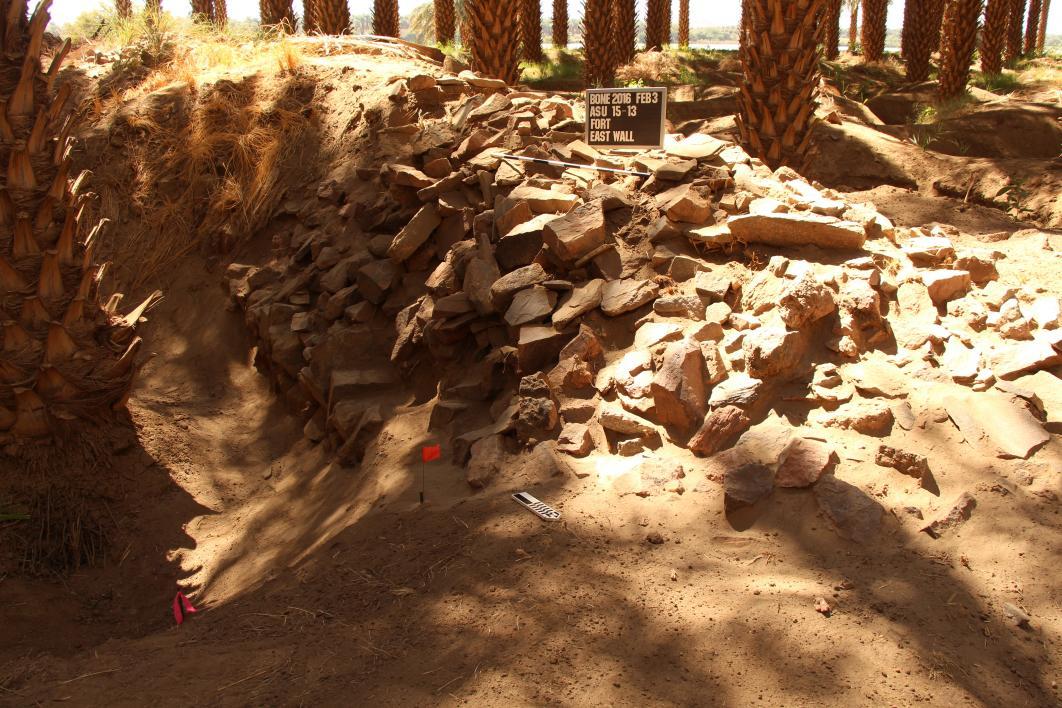Zalabiyya is a dish of fried dough pieces served with sugar or honey. In Sudan, it’s a common offering at afternoon tea, and Brenda Baker goes to tea in Sudan a lot.
“You get to a point where it’s like, ‘Oh no, I can’t eat any more zalabiyya,’” she said with a groan. But she doesn’t make these trips to learn about the cuisine.
Baker is an associate professor in Arizona State University’s School of Human Evolution and Social Change and a bioarchaeologist with the school's Center for Bioarchaeological Research, which means she studies how ancient people lived by examining their cemetery sites and bones.
Although much of her research focuses on Sudan’s past peoples, Baker also spends a lot of her time making connections with the country’s current residents. Part of it is just being friendly, but it’s also about working with local communities to preserve the area’s numerous, valuable archaeological sites.
Baker first began working in Sudan a decade ago, in an effort to help record and salvage archaeological data from a region along the Nile before it was submerged by a huge dam. Today, she faces new problems. After the dam was built, the surrounding area experienced a huge boom in agriculture. While some archaeological sites are being now plowed over for farming, others are being destroyed as new neighborhoods, schools and roads expand outward.
She and her team have a lot of ground to cover. Baker’s own project area is around 60 square miles, but includes more than 200 identified archaeological sites, which range from the Stone Age to modern historic times.
“I feel like I’m in a race to try to record as much as I can before it is lost to development,” she said.
For all the team’s work, however, what these sites truly need is a solution for their protection in the long term. Accomplishing that goal requires increasing local awareness, and building trust is the first step.
To be a good neighbor
When looking to rally support, there is often no better place to start than at home, even if it’s your home away from home.
During each field season, Baker and her team rent mudbrick houses in the local community, which requires them to be neighborly. In Sudan, this means giving and accepting invitations to tea, as well as organizing a big party at the end of each trip to thank the community for hosting them. Much like a neighborhood barbeque here in the U.S., the host provides the main course — in this case, a sheep — and the neighbors loan chairs and dishes.
“It takes time away from the work to do that, but I would much rather be a good neighbor and have this kind of outreach to show that we’re not arrogant or trying to take advantage of them,” Baker said. “We want to show them that we’re good people.”
In this way, her team not only gains more opportunities to talk to community members about the value of archaeological sites, but also the ability to benefit from local knowledge. Neighbors often know if there are other sites nearby and are likely tip off the team if they stumble upon a new one.
ASU archaeologist Brenda Baker and her team visit a neighbor's home. Tea and bowls of zalabiyya are on the tables in the center. Photo courtesy of Brenda Baker
Baker has also formed close relationships with the local workers that she hires each season. Some of them have worked with her for two or three years, and about five of them have worked with her for more than a decade. In the past, she has helped some of them get access to health care, while they, in turn, patiently help her improve her Arabic.
“We really have friends when we go back, because we’ve grown to know these guys,” she said.
Getting to that point was hard-won in some ways, but fulfilling in the end.
“Several who initially just wanted the work really got interested once they saw the kinds of things we were finding and how excited we were about it,” Baker said. “They became very proud of what they were doing and the knowledge and skills they were developing.”
Many of the workers have developed into skilled archaeologists, and Baker often has them work with new students.
“I tell the students, ‘Follow their lead and you can learn from them,’” she said.
Inadvertently, these workers have become their own form of outreach, as their pride compels them to share their work. Spontaneous mini-lectures to curious bystanders at the dig sites are a frequent occurrence.
“They often want to know if [a skeleton] is a man or a woman and how old it is,” Baker said. People are also fascinated by practical details, like the healed bone of an ancient woman showing that she broke a leg when she was young, but survived the injury.
“I think that’s the kind of thing that they can relate to their own experiences,” she said.
Baker also developed her own local educational tool — a brochure with photos of sites and artifacts that show the evidence of the area’s ancient history — after discovering that students in Sudan aren’t taught their ancient history until high school, which is an educational level that most never attain.
The brochures were initially just handed out to the schools close by, but soon even the parents were clamoring for copies.
The things that people remember
Interacting with the nearby communities gave Baker greater insight into their needs and presented her with opportunities to make lasting impacts outside of work.
She describes one day during her last field season when her team was invited for tea at the home of an impoverished family. The children in this family had, for three seasons, run out to greet the team as they drove back from their dig sites each afternoon. Yet their current residence was little more than a lean-to structure, and Baker learned from the parents that their house had been destroyed in a bad rainstorm.
“I wanted to help them,” Baker said. “These kids have been waving to us almost every single day. I’ve watched the little boy grow up from a baby to a toddler.”
To the parents’ shock, she decided to give them some of her own money to help them rebuild.
Baker and her team also regularly give supplies to nearby schools. Most recently, they were able to donate a large sum to three different schools for a connection to the new electrical grid. One of these, installed fans and lights in its classrooms so that it can continue to operate during sandstorms. But the school’s use of the leftover funds was a special surprise.
The school, which is visible from the houses where the team stays, was formerly a “brown building on a brown landscape.” So Baker was astonished to walk out one day and find it painted a bright turquoise.
“It gives you some color in a sea of brown,” she said, smiling.
In the future, Baker plans to raise additional funds so school leaders can buy a water tank and build a wall to better protect the building from sandstorms.
A bit of a mystery
When she isn’t investing in nearby communities, Baker continues to make fascinating archaeological discoveries. In the 2015 field season, her team examined a 1960s satellite photo that appeared to show a large structure near the Nile riverbank. On modern satellite photos, however, the structure is invisible, because it’s now surrounded by date palm groves.
When the team went to check things out for themselves, they found an ancient fort known locally as “El-Housh,” or “The Enclosure,” with three of its four walls still standing. The distinctive architecture suggested it was built sometime in the first few centuries A.D. Getting the landowner’s permission to excavate the site was a little tricky, but Baker’s tried-and-true method of having tea and explaining her archaeological work won him over. In describing what the fort had looked like long ago, he mentioned a gateway, providing the key to a baffling discovery.
While searching for the gateway, Baker’s team found a burial underneath an exterior wall of the fort. She describes the remains as having been placed in a foundation trench beneath the gateway — a type of burial that she had never before encountered or heard of in all her time in the region. The reasoning behind its placement is a puzzle, as the individual could have been an offering, an honored member of the community or an enemy doomed to be trodden upon for eternity.
“Obviously, it’s very purposeful, but we have no indication that this person was treated differently in death, other than being in this position and not in a formal cemetery,” Baker said. “It’s a bit of a mystery at this point.”
In the future, Baker and her team will excavate more of the fort and look for a second gateway opposite the one found in 2015 (she believes it’s possible there is another burial there as well). She also wants to submit a bone sample for radiocarbon dating, which will confirm when the fort was constructed. Baker hopes that this discovery will prompt other archaeologists to take a closer look at gateways, as it could be a regional practice that researchers are simply unaware of at present.
Though she will not be returning to Sudan this season, Baker still has plenty to keep her busy in her other place of work: the laboratory. After three field seasons in a row, she has mountains of material from Sudan to process and analyze, including the remains from El-Housh.
Once the spring 2017 semester is over at ASU, Baker will also manage as co-editor-in-chief the publication of the premiere issue of Bioarchaeology International, a new journal that aims to bridge the gap between the archaeological focus on the context of a burial and the bioarchaeological focus on skeletal remains, furthering her work that often starts with tea and plates of zalabiyya.
Learn more about Baker’s Bioarchaeology of Nubia Expedition (BONE) project here.
Top photo: Baker's team begins working on a cemetery from the Kerma period (2,500-1,500 BC). Photo courtesy of Brenda Baker
More Science and technology

ASU-led space telescope is ready to fly
The Star Planet Activity Research CubeSat, or SPARCS, a small space telescope that will monitor the flares and sunspot activity of low-mass stars, has now passed its pre-shipment review by NASA.…

ASU at the heart of the state's revitalized microelectronics industry
A stronger local economy, more reliable technology, and a future where our computers and devices do the impossible: that’s the transformation ASU is driving through its microelectronics research…

Breakthrough copper alloy achieves unprecedented high-temperature performance
A team of researchers from Arizona State University, the U.S. Army Research Laboratory, Lehigh University and Louisiana State University has developed a groundbreaking high-temperature copper alloy…


